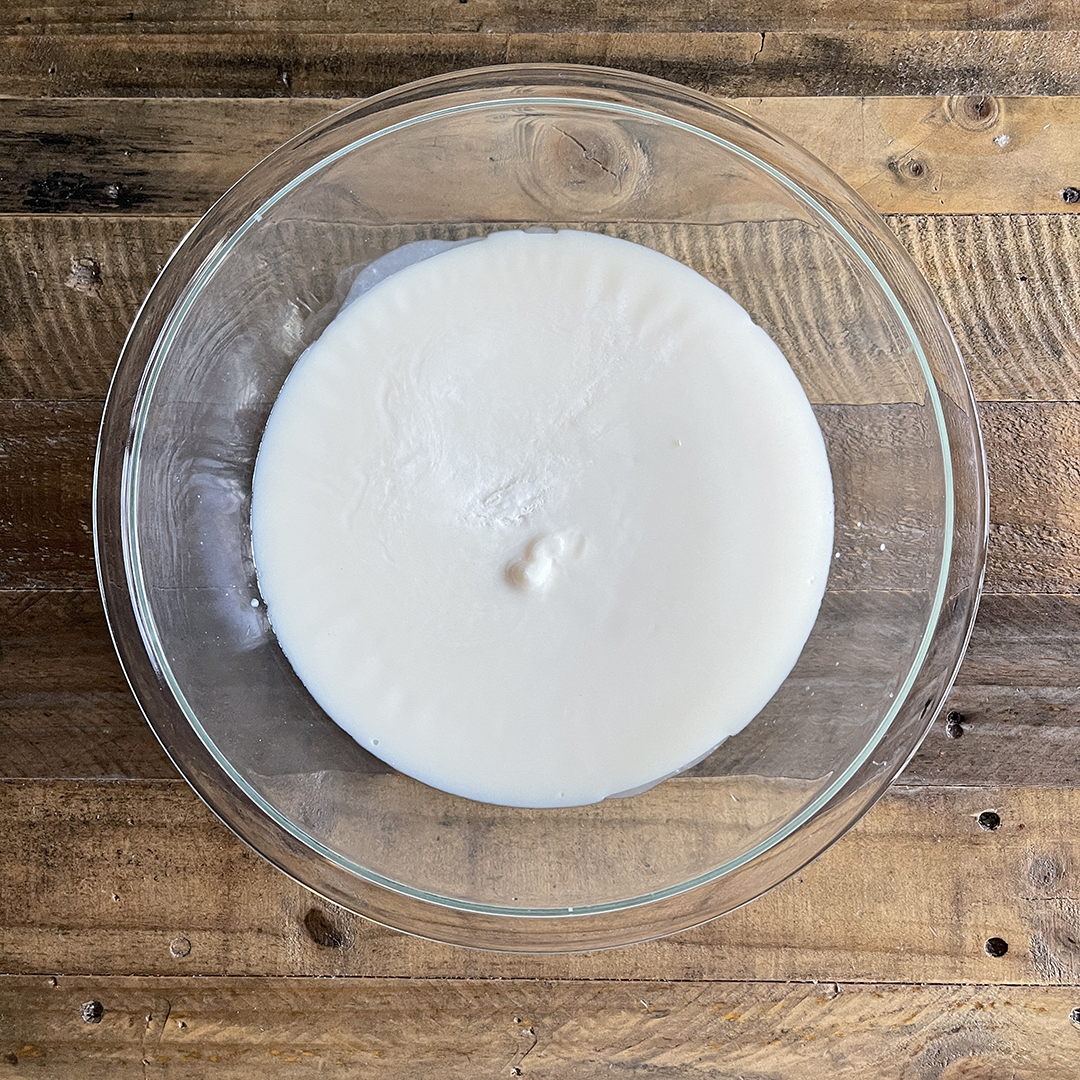Tallow, the rendered fat of animals, has a rich history of use for various purposes. In this comprehensive tutorial, we’ll explore the process of how to make tallow in your home kitchen and delve into the many practical applications of this versatile substance. From tallow lotion to contemporary culinary creations, tallow has much to offer.
Sourcing Quality Grass-Fed Fat
Before you embark on your tallow-rendering journey, it’s crucial to source quality grass-fed fat. Unlike standard grocery stores, you’ll need to head to a butcher or look online for the specific fat you’re seeking, known as suet or leaf fat. Suet refers to the large fat deposits around the kidneys of cows, while leaf fat is commonly found in buffalo and bone marrow tallow offers yet another unique variation.
High quality beef fat from a local farm. Notice the pieces of vein, tendon, and connective tissues that need to be rendered out.
Opt for nutrient-dense fat from grass-fed animals as it provides superior quality. Local direct-to-consumer farms or online suppliers like https://sevensons.net/ (a grass-fed farm in Indiana) are excellent sources. If you prefer convenience, already-rendered grass-fed tallow can also be purchased online. This pre-rendered tallow can skip the initial rendering stage.

The suet should be chopped into 1-inch squares before beginning.
How to Make Tallow: The Process
In its natural state, suet contains water and various impurities such as veins, ligaments, meat fragments, and connective tissues, all of which reduce its shelf life. The goal of rendering is to extract the pure fat by heating the suet, allowing it to separate from these impurities. The result is a creamy-colored substance known as tallow.
In your home kitchen, you have two primary methods for rendering tallow: the Stove Top Method and the Oven Method. Both methods require chopping the suet into approximately 1-inch cubes to expedite the rendering process.
Rendering Tallow: Stove Top Method
The Stove Top Method is the quicker method when learning how to make tallow but requires constant attention for about an hour, posing a higher risk of overheating. View the photo slideshow below to see pictures of each step.
- Place chopped suet into a large pot.
- Set the stove to medium-high heat.
- Attach a cooking/candy thermometer to monitor the fat’s temperature (around 250-degrees Fahrenheit is ideal).
- Stir continuously initially while the pot is coated with melting fat.
- As the fat melts and reaches 250-degrees Fahrenheit, it will boil and bubble.
- Stir the pot every 5-8 minutes while monitoring the temperature.
- Notice the impurities like ligaments and veins separating from the fat.
- Toward the end, the meaty bits will fry and darken.
- After an hour, turn off the heat and let the fat cool slightly but not solidify.
- Pour through a strainer lined with a paper towel or cheesecloth to remove impurities.
- The result is pure rendered tallow, similar in consistency to butter, which can be stored at room temperature for months.
How to Make Tallow: Oven Method
The Oven Method is more foolproof for how to make tallow but takes several hours without the need for constant supervision. View the photo slideshow below for pictures of the Oven Method Process.
- Place chopped suet in a covered oven-safe dish, preferably glass.
- Preheat the oven to 250-degrees Fahrenheit and place the fat inside.
- Allow the fat to melt for 5-10 hours, checking for progress periodically.
- When progress slows significantly, remove the pan from the oven.
- Let the hot fat cool for a while but not solidify.
- Pour the mixture through a strainer lined with a paper towel or cheesecloth into a bowl.
- Press the fatty chunks with a wooden spoon to extract as much melted fat as possible.
- The result is golden-yellow melted fat, ready for immediate use in pemmican or for later use.
Uses for Rendered Tallow
Now that you have successfully learned how to make tallow, let’s explore its versatile applications:
1. Pemmican:
- To make pemmican, combine dried meat (such as lean beef or bison), dried berries (like blueberries or cranberries), and rendered tallow in a ratio of approximately 1:1:1. Adjust the proportions based on your preference.
- Grind the dried meat into a fine powder or small chunks.
- Mix the dried meat and berries together in a bowl.
- Heat the rendered tallow until it’s liquid but not too hot.
- Pour the melted tallow over the meat and berry mixture, ensuring everything is well coated.
- Press the mixture into a pan or mold and allow it to cool and solidify.
- Once solid, cut or break the pemmican into convenient portions for a nutrient-rich, energy-dense snack.
2. Cooking Oil:
- Use rendered tallow as a substitute for other cooking oils in recipes that require high-heat cooking methods like frying or roasting.
- For frying, heat the tallow in a pan until it’s hot but not smoking, then add your ingredients. The stability of tallow at high temperatures makes it an excellent choice for achieving a crispy, golden exterior on fried foods.
3. Baking:
- Replace butter or other fats in baking recipes with tallow for a unique, rich flavor.
- When substituting, use a one-to-one ratio (e.g., if a recipe calls for 1 cup of butter, use 1 cup of tallow).
- Melt the tallow before incorporating it into your baking mixture.
4. Skincare:
- For skincare products like balms and salves, blend rendered tallow with essential oils and other desired ingredients.
- Melt the tallow and mix it with essential oils known for their skincare benefits, such as lavender or tea tree oil.
- Pour the mixture into containers or molds to cool and solidify, creating a nourishing skincare product.
5. Candles:
- To make tallow candles, melt the rendered tallow and mix it with candle wicks and, if desired, scents like lavender or cinnamon.
- Pour the melted tallow into candle molds or containers with the wicks centered.
- Allow the tallow to cool and solidify around the wick, creating candles that burn steadily.
6. Leather Care:
- Use a clean, soft cloth or sponge to apply a small amount of melted tallow to the leather surface.
- Gently rub the tallow into the leather in a circular motion, paying attention to any dry or scuffed areas.
- Allow the tallow to absorb into the leather, which will help condition and waterproof it.
- Wipe away any excess tallow with a clean cloth and buff the leather to a desired shine.
7. Woodworking:
- Apply a thin layer of melted tallow to saw blades, hand planes, or other woodworking tools before use.
- The tallow will act as a lubricant, reducing friction and preventing wood from sticking to the tool’s surface.
- Reapply tallow as needed during your woodworking project to maintain smooth, efficient cutting.
By following these detailed instructions for each use of rendered tallow, you can make the most of this versatile substance in various aspects of your daily life and activities.
Recently, tallow has taken the skin care industry by storm. Many people are realizing the amazing benefits of beef tallow for the skin.
Tallow Lotion: A Natural Skin Care Option
In our quest for effective and wholesome skincare, it’s time to turn to nature’s timeless remedies. Long before the era of synthetic chemicals and complex formulas, our ancestors harnessed the remarkable healing power of rendered fat, known as tallow. Today, we’re unveiling the secrets of this age-old treasure, showcasing its unparalleled benefits, and introducing GRÝS, an all-natural grass-fed beef tallow-based skin cream that rekindles the wisdom of our forebears.

Tallow, derived from the highest quality fat of American grass-fed, grass-finished cows, undergoes a meticulous rendering process at low temperatures to extract Mother Nature’s finest. The result is an exquisite, nutrient-dense balm, GRÝS, which embodies the simplicity and efficacy of nature’s touch.
For centuries, from Native Americans to Australian Aboriginals, the potent healing properties of tallow have been celebrated. Archival records abound with references to its use as a foundational ingredient for healing salves, ointments, and skin creams. As modern concerns grow over the risks and skin irritations associated with synthetic chemicals in mainstream skincare, the timeless solution of tallow beckons us back to our roots.
Rendered grass-fed tallow is a storehouse of fat-soluble Vitamins A, D, K, and E, akin to super-fuels for our skin, eagerly absorbed by our skin cells. Moreover, tallow contains conjugated linoleic acid (CLA) and palmitoleic acid, two compounds renowned for their anti-inflammatory and antimicrobial properties. Imagine a cream that not only nourishes but also protects your skin from the outside – that’s the magic of tallow.
But GRÝS didn’t stop there. To enhance the natural virtues of grass-fed tallow, GRÝS has integrated three additional remarkable organic ingredients into our tallow lotion:
100{ebf8267f808eac43d24742043db51eeeb004db6334271e1bb6fe8c21c7925753} Organic Aloe Vera Gel: With its treasure trove of vitamins, enzymes, and amino acids, aloe vera binds moisture into your skin, stimulates collagen and elastin production, and softens hardened skin cells. It also acts as a natural astringent, tightening pores and promoting skin health.
100{ebf8267f808eac43d24742043db51eeeb004db6334271e1bb6fe8c21c7925753} Organic Clary Sage Essential Oil: Derived from clary sage plants, this essential oil is a time-honored remedy for various skin issues. It balances sebum production, supports natural healing by reducing inflammation, and promotes overall skin vitality.
100{ebf8267f808eac43d24742043db51eeeb004db6334271e1bb6fe8c21c7925753} Organic Sandalwood Essential Oil: Celebrated in Ayurveda and Traditional Chinese Medicine, sandalwood’s alpha-santalol component is renowned for its benefits, including reducing scarring, wrinkles, inflammation, and improving skin tone. Its soothing aroma also calms the mind, reducing stress and promoting restful sleep.
These four extraordinary ingredients have been skillfully blended into a light, creamy lotion that absorbs rapidly, leaving no residue or greasiness behind. Suitable for both dry and oily skin, and safe for all ages, GRÝS is a testament to Mother Nature’s gift to our skin.
GRÝS is backed by a 100{ebf8267f808eac43d24742043db51eeeb004db6334271e1bb6fe8c21c7925753} Satisfaction Guarantee, as they firmly believe in the power of their all-natural face and skin cream. If, for any reason, you’re not delighted with the results, simply reach out to them, and they’ll refund your full purchase price.
Bid farewell to chemically laden creams with indecipherable ingredients, and say hello to a time-tested formulation that makes perfect sense – GRÝS. Trust in the chemical-free balm crafted by Mother Nature herself, and breathe easy as GRÝS nourishes and rejuvenates your skin from the outside in. Embrace a skincare solution rooted in tradition and backed by modern understanding – GRÝS.
How to Make Tallow: Conclusion
Learning how to make tallow in your home kitchen is a rewarding and versatile endeavor. Whether you learn how to make tallow for pemmican, cooking, baking, or exploring its historical significance, tallow offers a wide range of practical applications. By understanding its history and mastering the rendering process, you can fully appreciate the value of this timeless substance in both traditional and modern contexts.



